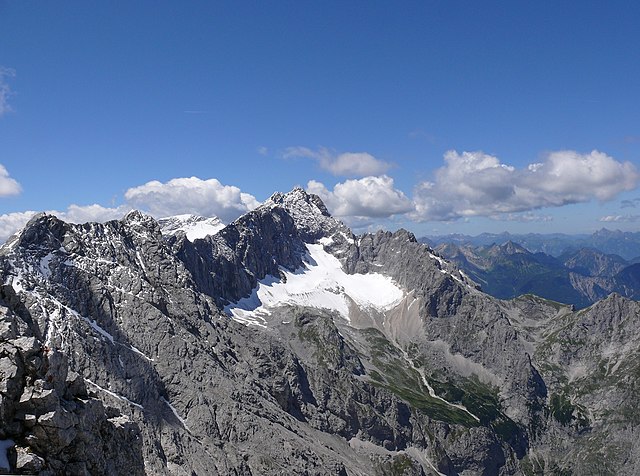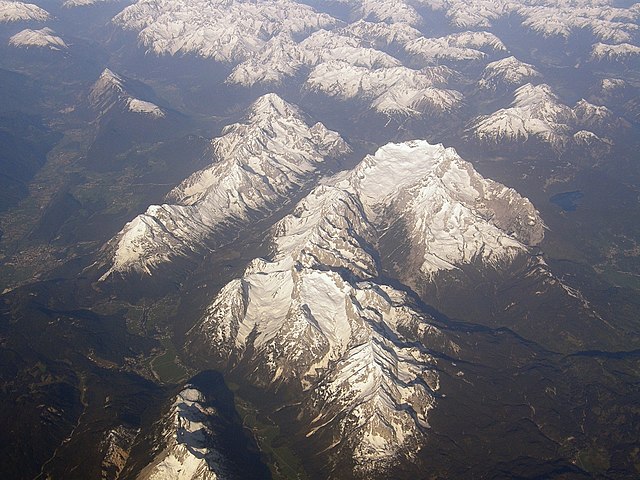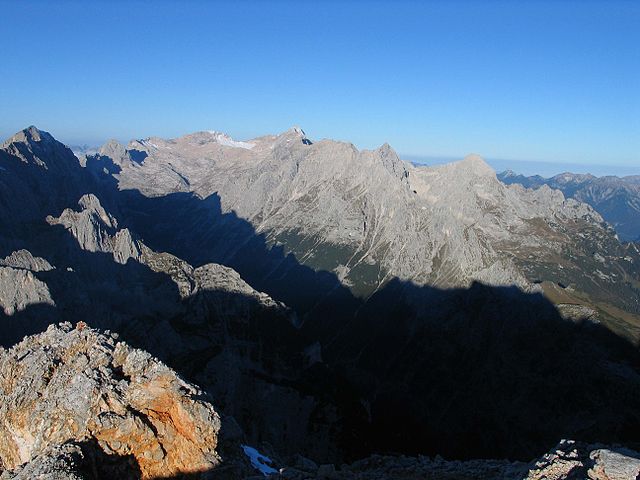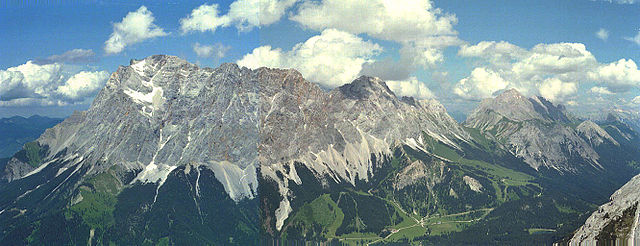The Zugspitze, at 2,962 m (9,718 ft) above sea level, is the highest peak of the Wetterstein Mountains and the highest mountain in Germany. It lies south of the town of Garmisch-Partenkirchen in Bavaria, and the Austria–Germany border is on its western summit. South of the mountain is the Zugspitzplatt, a high karst plateau with numerous caves. On the flanks of the Zugspitze are two glaciers, the largest in Germany: the Northern Schneeferner with an area of 30.7 hectares and Höllentalferner with an area of 24.7 hectares. Shrinking of the Southern Schneeferner led to the loss of glacier status in 2022.
Zugspitze from Ehrwald, Tyrol, Austria
View from the Alpspitze of the Zugspitze summit and the Höllentalferner glacier in 2007
Annotated aerial photograph of the Zugspitze massif
The Zugspitzplatt above the Reintal valley in 2006
The Wetterstein mountains, colloquially called Wetterstein, is a mountain group in the Northern Limestone Alps within the Eastern Alps. It is a comparatively compact range located between Garmisch-Partenkirchen, Mittenwald, Seefeld in Tirol and Ehrwald along the border between Germany (Bavaria) and Austria (Tyrol). Zugspitze, the highest peak is at the same time the highest mountain in Germany.
The Wetterstein and Mieming Chain (left) from the northeast
The Zugspitzplatt and Zugspitze, Jubiläumsgrat, Hochblassen and Alpspitze from the Partenkirchen Dreitorspitze
The Zugspitze Group from the west with summits around the plateau
The western Wetterstein mountains from the Ehrwalder Sonnenspitze in the Mieming Chain








